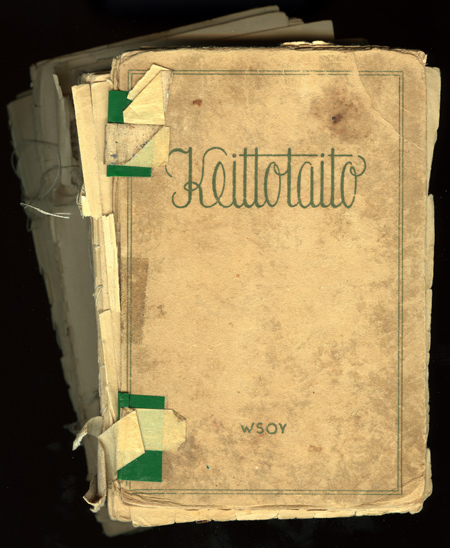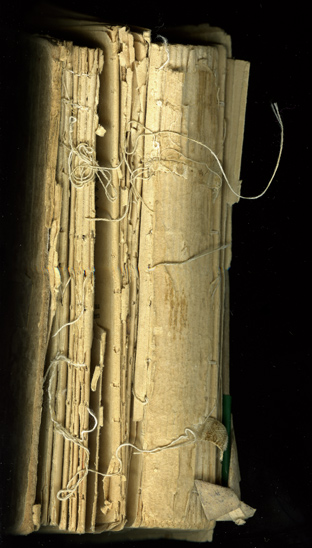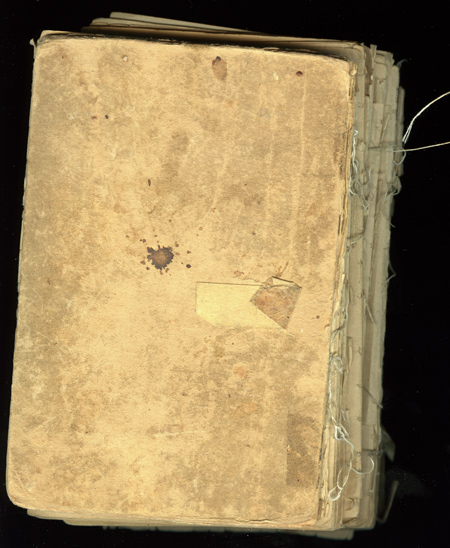a Finnish cookbook



This was my mother’s beloved cookbook, a 1948 edition, which came with her on our emigration to Canada many decades ago now. After her passing, I have kept it all these years safely tucked away. I’ve thought of photographing this well-worn artifact many times, especially after doing so with the similarly disintegrated English-Finnish dictionary.
As I wrote about that dictionary, this cookbook was in some ways also:
an immigrant’s tool, an almost-bible, a book of days
a history of heartache, homesickness, hope and a new home
I was recently re-inspired to finally do this when daughter Elisa asked for a certain favourite family recipe which she wished to post in the spring quarterly of her newsletter. (If interested you may request it from her!) I may put up a few more photos of the book’s interior in another post.
Remembered and added next day:
my beloved worn book of Grimm’s fairytales in Finnish
and my first Finnish alphabet book
Added later: Please visit part 2 for views inside the cookbook
March 25, 2012 in Books, Finland, Estonia & Finno-Ugric, Found Objects, History, Home, Photoworks by Marja-Leena
That is beautiful, Marja-Leena
How lovely it must be to own it!
Haluatko korjata ne kirjat?
This is about the way to do it:
1) find a place where you can get powdered animal glue,
2) find a Junior Woodchucks Guide for how to cook glue out of powder
3) check how well is the paper, and put the pages in order, tight and strict on the back of the book
4) find your sharpest, best sewing needles and start sewing the back (you can see where it was done before, you may have to slice some pages if it has gotten damaged)
5) when sewing done, you take good heavy piece of paper (not cardboard) and glue it with your animal glue on top of the sewn back
6) after the clue has dried, you finish the stuff up with cardboard back, which you can dy in same color as the card board new front and back covers
7) you write with fine calligraphy the needed texts in the covers
My husband does this constantly. I bet that the 1940’s paper is much better in quality than paper is these days. The today’sd paper doesn’t last time at all. Which must be because of the bad chemicals.
We DO have Junior Woodchuck’s Guide and I for instance learned to bake waffles with my waffle iron with the help of the great guidebook.
I can certainly imagine some elements if not all of that spine appearing in your work. The back is also begging to be part of something too. It is lovely when something so personal fits beautifully with work one makes.
Mouse, I’m so pleased you think it’s beautiful. Yes, it is a precious object full of memories for me.
Ripsa, thanks for the directions! I may try it on some other old books. I don’t think this one is repairable. The paper is of very poor quality, like newprint though heavier. Many pages are loose and torn. I think there may have been difficulties getting good paper right after the war. I have a much older edition (1933) of the same book which belonged to a dear family friend who was like a grandmother to me. The paper and cover are much better quality and it’s not as worn out (maybe not as heavily used as my mother’s). Nowadays there is more awareness about the use of acid-free papers and I think more publishers do choose them in their better quality hard cover books.
Olga, yes, I really would like to use these images in some work but I’m not sure yet in what way – perhaps a photo series. Oh, I just remembered another old book that I had posted quite a while ago, link added above. I also have a couple of old novels of my parents… hmm…
Wow. We have my wife’s aunt’s (can’t get the umlauts, so I’ll use Englantilaiset)Finnish/English dictionary from her mother. It’s battered but still very usable.
You can also simply go to a bookbinder and get it rebound. I have done this with an 1877 atlas bequeathed from my grandfather and while it destroys any antique (that is, speculative) value of the item, it saves it in most important ways.
Marja-Leena,
please, tell what Finnish novel you have! And which version on Grimm’s tales, is it the two volume part? If it’s that then it’s the uncencored one. After the war they published a version which have less cut limbs and blood and horrors, so as not to scare poor children too much.
When I was 8 yrs old, my father got me the two volume set, unabridged, and said that I have to quit if it feels too bad. I thought it absolutely great! I saw my father to turn around and shake his head: when does this girl become a true girl…
Let me see, that was in 1953.
Books that come from our roots are treasures indeed. When I was in New Zealand my aunt gave me a book that belonged to my mother when she was a child called “Maoriland Fairy Tales” and some other books that had been hers. Like your mothers cook book they have the beauty of age. I’m sure I’ll see that cook book in a print someday.
Gorgeous images of a beautiful object. Surely you can do one of your magical prints based on it?
Black Peter, I remember you wrote about owning the same copy of the dictionary (it’s there on that post!). And no umlauts needed this time. My mother gave me most of the favourite recipes when I married, along with a new Finnish cookbook, so I don’t use this old one, so no need to restore it. It has no antique value, just sentimental and I love it the way it is. I imagine your grandfather’s atlas to be more useful and valuable in many ways.
Ripsa, I hope you don’t mind, but I will write a post on the book, soon I hope! It’s in English, non-fiction, partly about a famous Finn. My Grimm’s book was published in 1952, 4th edition, by Oy Valistus, called Grimmin Kauneimmat Sadut, edited by K. Merikoski, illustrated by Rudolph Koivu, with 475 pages plus indexes. Do you think it’s the uncensored one? I see from some writing inside that two aunts sent it to me for Christmas 1953.
Later: Oh, Ripsa, I just read the introduction which says this was meant for children so the most lovely stories were chosen and may have been shortened or modified…. so that must mean censored. Imagine that!
Anne, how wonderful that you got your mother’s books! Is it when we get older that we appreciate these old things from our past? I never considered myself that sentimental but I seem to be with certain Finnish things. Thanks, I think you will see this in print one day.
Natalie, thanks, the ideas are certainly flying again! A new series….?
How delightful to see such a treasure. There’s something very intimate about old family cookbooks. My mother never was much of a cook (she went to work full-time once we moved to Canada) so my oldest example is a 1950’s Joy of Cooking.
Susan, do you use that cookbook? It’s interesting for me to note that my mother, who was a fantastic cook, didn’t wear out the cooking pages as much as the baking ones. It seems she did not need recipes for the former as much as for the latter, which I find true for me as well.
Are the amounts wild?
I have a Louisiana cookbook (hand-painted Mammy-in-kerchief on the cover–wow is all I can say about that one!) from about that time, and the amounts are tremendous. Syllabub for 200, etc.
An alternative to binding would be a curatorial book box. Would help preserve while keeping it as is.
Marly, your cookbook sounds like an historical treasure of cooking for large families and guests on southern plantations. No, I haven’t noticed large amounts though I haven’t studied it all. In fact, this was a text book for home economics schools (my mother attended one) for the subtitle is ‘for homes and schools’ so maybe there are some banquet size recipes – I should delve deeper.
Thanks for the excellent suggestion of a curatorial box – will look into it. I’m not sure if our daughters are interested in such inheritances….
It’s funny you should mention that about meal planning as I do the same thing. The only times I refer to Joy are for the dessert and baking recipes.
The oldest book I have is an 1822 edition of Robert Burns poetry that was handed down to my Father as the eldest son. I will give it to my son but it will visit a specialist first who can advise me about renewing the cover.
Susan, an 1822 edition of Burns poetry – what a treasure! I hope restoration works out but your son will still be proud of it. We don’t have anything that old in our family for almost everything was left behind.
What a beautiful object. I love that sense of something so well-handled and loved that it’s worn down to bleached bone, like the remains of elephants picked over and rubbed smooth by the remaining members of their families.
I have a book purchased for me by my mother when I was a child. It’s large-format and filled with beautiful black and white photographs of Egyptian sculpture. So worn did it become over the years that it simply wasn’t possible to handle it comfortably, and so snot long after my mother had died, I had it re-bound in leather and pale yellow linen. The linen probably wasn’t a great idea, as it quite quickly became marked, most notably with a ring when my father rested his coffee cup on it! Both my parents are long gone now, and at this remove even the coffee stain has become part of the history of the book, another memory to treasure. People talk about ‘Kindle’ and its convenience, and I can see that it might work when one wants to travel light. But when it comes to memories, books-as-objects are irreplaceable repositories of our histories.
I went to look at your Finnish Alphabet book. What beautiful lithography! Another of the lost arts of books. I’m currently working on a hand-drawn alphabet primer for an exhibition of folding-books made by artists, and as a consequence I find I simply can’t get enough of primers.
Clive, thank you for your visit and your remarkable words – ‘worn to bleached bone’.. picked clean by elephants!
Your love of children’s books shines through in your blog, and your story of that book from your mother is a lovely one. It is amazing how with time an upsetting stain becomes a loved mark, a historical record of an event and a person.
I’m pleased you like the alphabet book, modest as it is, and of course you would with your latest exciting project with a number of artists which I look forward to seeing unfold!
I remember the dictionary from your earlier post. How intriguing is the cookbook! It would be worth learning Finnish to read it. If not the splashes and stains which invariably adorn recipe books would be worth inspecting. I imagine that you still use it from time to time.
Joe, as an avid gourmet chef, I knew you would find this interesting. I don’t use this book for I have a newer one, as well as recipes I wrote down directly from my mother.
You’ve got me remembering my Cincinnati great-grandmother’s German-language cookbook. I wasn’t able to retrieve it from my mother’s house, but I do remember a section explaining how best to pluck a chicken before frying its parts.
How wonderful that you have an older and a newer edition of your family cookbook!
rouchswalwe, it’s too bad you were not able to retrieve it. Do you have any other German cookbooks, say from your grandmother or mother? Now I’m wondering if my mother-in-law left any with her daughters, hmm…. Plucking chickens would have been an important skill for any hausfrau back then, even my mother had to do it quite young when helping my grandmother on the farm. Actually my newer cookbook is a different publication but still with similar traditional recipes.